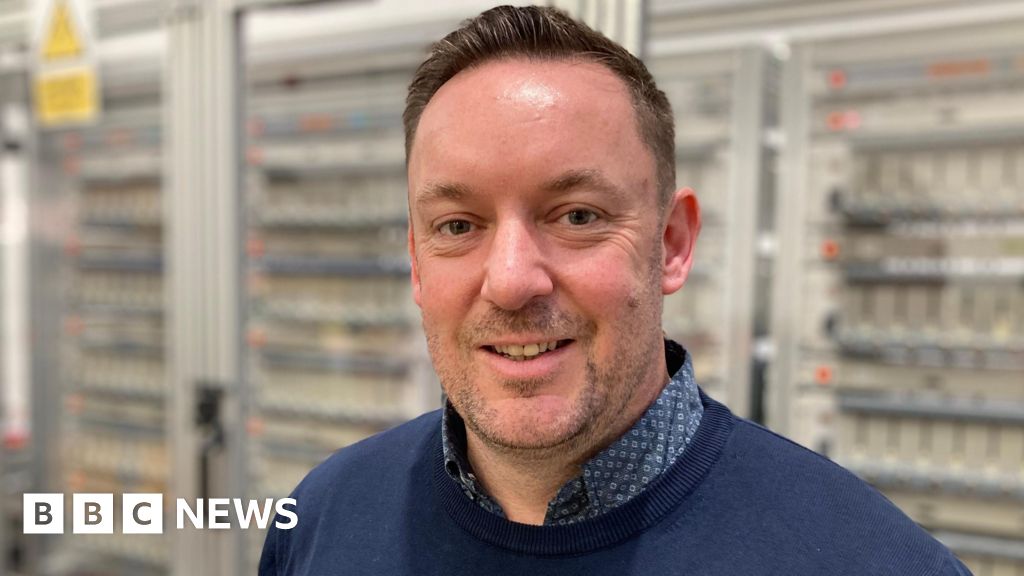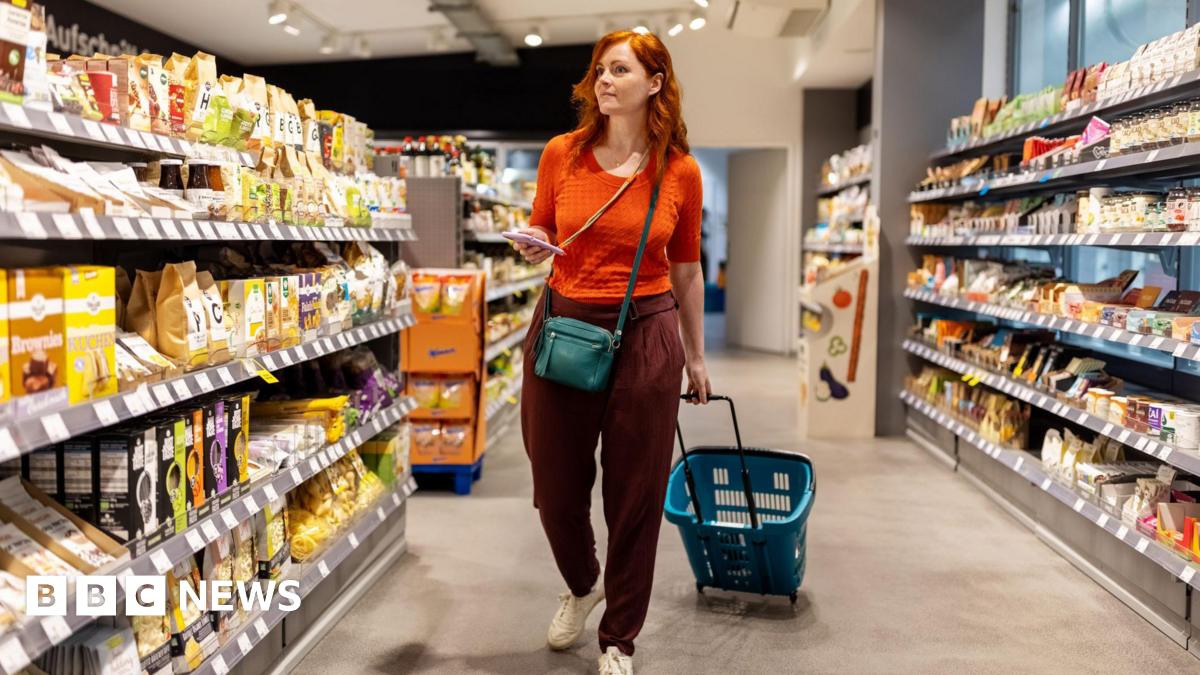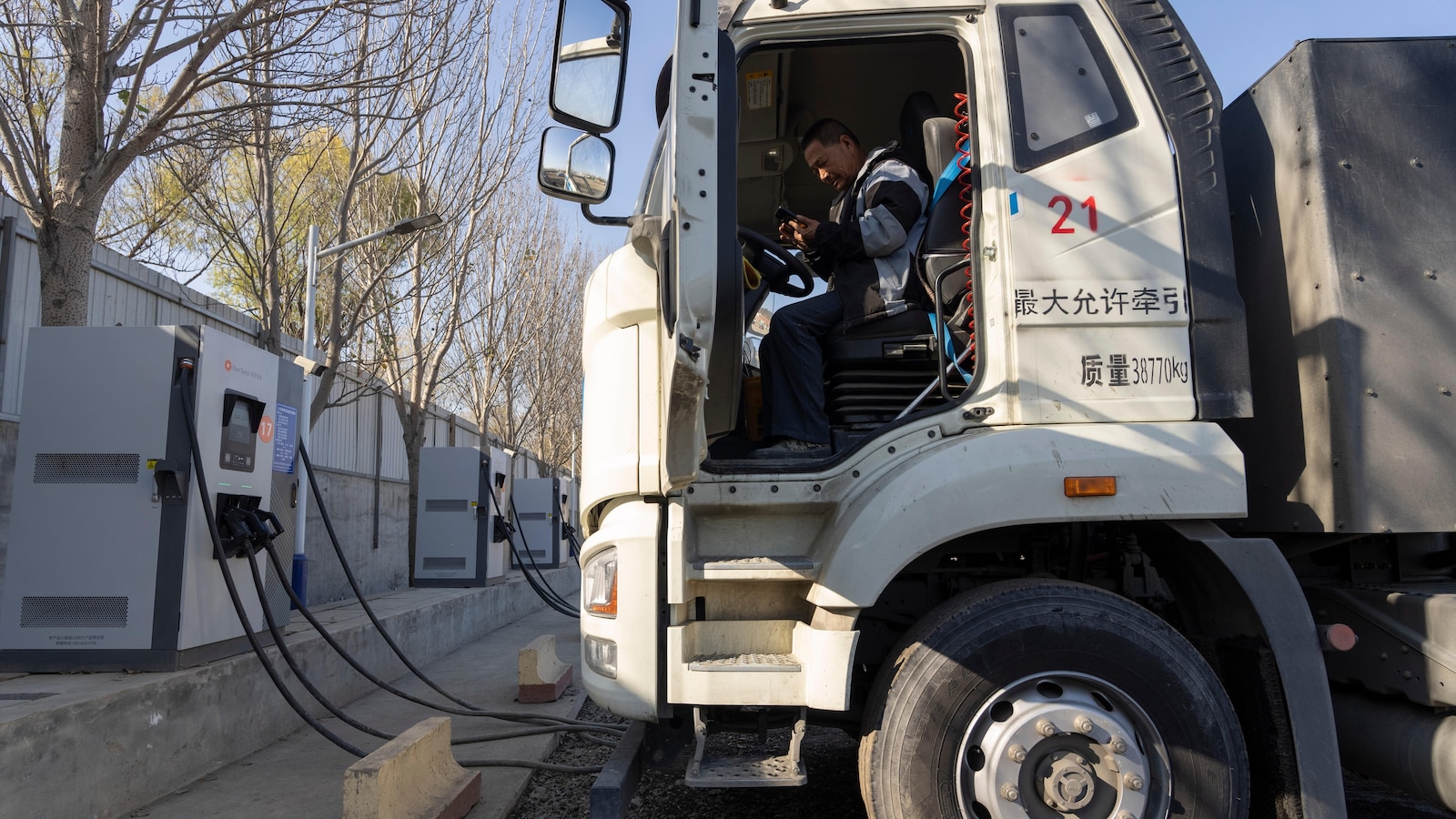HANOI, Vietnam — China is replacing its diesel trucks with electric models faster than expected, potentially reshaping global fuel demand and the future of heavy transport.
In 2020, nearly all new trucks in China ran on diesel. By the first half of 2025, battery-powered trucks accounted for 22% of new heavy truck sales, up from 9.2% in the same period in 2024, according to Commercial Vehicle World, a Beijing-based trucking data provider. The British research firm BMI forecasts electric trucks will reach nearly 46% of new sales this year and 60% next year.
Heavy trucks carry the lifeblood of modern economies. They also contribute significantly to global emissions of carbon-dioxide: In 2019, road freight generated a third of all transport-related carbon emissions.
Trucking has been considered hard to decarbonize since electric trucks with heavy batteries can carry less cargo than those using energy-dense diesel. Proponents of liquefied natural gas have viewed it as a less polluting option while technology for electric heavy vehicles matures.
Liquefied natural gas, or LNG, is natural gas cooled to a liquid fuel for easy storage and transport.
China’s trucking fleet, the world’s second-largest after the U.S., still mainly runs on diesel, but the landscape is shifting. Transport fuel demand is plateauing, according to the International Energy Agency and diesel use in China could decline faster than many expect, said Christopher Doleman, an analyst at the Institute for Energy Economics and Financial Analysis.
Electric trucks now outsell LNG models in China, so its demand for fossil fuels could fall, and “in other countries, it might never take off,” he said.
The share of electrics in new truck sales, from 8% in 2024 to 28% by August 2025, has more than tripled as prices have fallen. Electric trucks outsold LNG-powered vehicles in China for five consecutive months this year, according to Commercial Vehicle World.
While electric trucks are twice to three times more expensive than diesel ones and cost roughly 18% more than LNG trucks, their higher energy efficiency and lower costs can save owners an estimated 10% to 26% over the vehicle’s lifetime, according to research by Chinese scientists.
“When it comes to heavy trucks, the fleet owners in China are very bottom-line driven,” Doleman said.
Early sales were buoyed by generous government incentives like a 2024 scheme for truck owners to trade in old vehicles. Owners can get up to about $19,000 to replace older trucks with newer or electric models.
Investments in charging infrastructure are also boosting demand for electric trucks.
Major logistics hubs, including in the Yangtze River Delta, have added dedicated charging stations along key freight routes. Cities like Beijing and Shanghai have built heavy-duty charging hubs along highways that can charge trucks in minutes.
CATL, the world’s largest maker of electric vehicle batteries, launched a time-saving battery-swapping system for heavy trucks in May and said it plans a nationwide network of swap stations covering 150,000 kilometers (about 93,000 miles) out of China’s 184,000 kms (about 114,000 miles) of expressways.
The surge in sales of electric trucks is cutting diesel use and could reshape future LNG demand, analysts say.
Diesel consumption in China, the second-largest consumer of the fuel after the U.S., fell to 3.9 million barrels per day in June 2024, down 11% year-on-year and the largest drop since mid-2021, partly reflecting the shift to LNG and electric trucks, according to the U.S. Energy Information Administration.
“The rise of China’s electric truck sector is one of the more under-reported stories in the global energy transition, especially given its potential impact on regional diesel trade flows,” said Tim Daiss of APAC Energy Consultancy.
LNG truck sales peaked in Sept 2023 and March 2024 after China eased transport restrictions imposed during the COVID-19 pandemic, said Liuhanzi Yang of ICCT Beijing. By June 2025, sales had slipped 6% as electric trucks gained ground.
Shell’s 2025 LNG Outlook projects that demand for imported LNG in China, the world’s largest LNG importer, will continue to rise partly due to LNG trucks. It also suggests LNG trucking might expand to other markets, such as India.
China’s electric trucks are already cutting oil demand by the equivalent of more than a million barrels a day, estimates the New York-based research provider Rhodium Group.
But Doleman views LNG as a “transitional step” unlikely to be seen apart from in China, where a vast pipeline infrastructure, abundant domestic gas production and byproducts like coke oven gas created conditions conducive to LNG-fueled trucking not seen elsewhere.
China’s is planning new emission standards for vehicles that will limit multiple pollutants and set average greenhouse gas targets across a manufacturer’s fleet. This will make it “almost impossible” for companies relying solely on fossil-fuel vehicles to comply, Yang said.
A 2020 ICCT study found LNG-fueled trucks cut emissions by 2%-9% over 100 years but can be more polluting in the short run due to leaks of methane, a potent planet-warming gas that can trap more than 80 times more heat in the atmosphere in the short term than carbon dioxide.
Modern diesel now nearly matches LNG in air-quality performance.
Already the world’s largest exporter of passenger cars, China is turning its sights to the global electric truck market.
Chinese automakers have kept costs down and sped up truck manufacturing while ensuring different parts work seamlessly together with in-house production of most key components, from batteries to motors and electronics, said Bill Russo, founder and CEO of the Shanghai-based consultancy Automobility Limited.
China’s hyperactive delivery industry, particularly urban freight trucks, has been an early proving ground for these vehicles, he noted.
In 2021-2023, exports of Chinese heavy-duty trucks including EVS to the Middle East and North Africa grew about 73% annually while shipments to Latin America rose 46%, according to a McKinsey & Company report. The share of electrics is expected to grow, though limited charging infrastructure could pose a challenge.
China’s Sany Heavy Industry says it will start exporting its electric trucks to Europe in 2026. It is has already exported some electric trucks to the U.S., Asian countries like Thailand and India, and the the United Arab Emirates, among others.
In June, Chinese EV maker BYD broke ground in Hungary for an electric truck and bus factory, with an eye toward a mandatory European target of cutting carbon emissions from new trucks by 90% by 2040 compared to 2019 levels.
Prices of zero-emission trucks in Europe must roughly halve to become affordable alternatives to diesel, according to another study in 2024 by McKinsey.
Volvo told The Associated Press that it didn’t comment on competitors but welcomed “competition on fair terms,” while Scania did not respond.
“Things are shaking up,” Daiss said. ___
The Associated Press’ climate and environmental coverage receives financial support from multiple private foundations. AP is solely responsible for all content. Find AP’s standards for working with philanthropies, a list of supporters and funded coverage areas at AP.org.
 BBC
BBC













